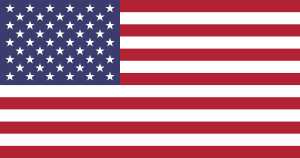Alaska, USA
 Alaska is the 49th and largest U.S. state with an area of 1,718,000 km². It is a sparsely populated state with around 731,000 inhabitants (0.4/km2), situated on the northwest extremity of the country’s West Coast. Northern Alaska largely consists of tundraA type of ecosystem in which tree growth is limited by low temperatures. The origin of the word is from from the Kildin Sami word t?ndâr, meaning "uplands" or "treeless mountain tract". In the northern... More covering mountain ranges, permafrostPermafrost is frozen ground that remains at or below zero degrees Celsius (32 degrees Fahrenheit) for two or more years. It forms in regions where the mean annual temperature is... More and coastal plains. The climateThe average weather we would expect over a long period of time (seasons, years, decades). Climate varies from place-to-place across the Earth. Climate is determined by long-term (over at least... More is sub-arctic.
Alaska is the 49th and largest U.S. state with an area of 1,718,000 km². It is a sparsely populated state with around 731,000 inhabitants (0.4/km2), situated on the northwest extremity of the country’s West Coast. Northern Alaska largely consists of tundraA type of ecosystem in which tree growth is limited by low temperatures. The origin of the word is from from the Kildin Sami word t?ndâr, meaning "uplands" or "treeless mountain tract". In the northern... More covering mountain ranges, permafrostPermafrost is frozen ground that remains at or below zero degrees Celsius (32 degrees Fahrenheit) for two or more years. It forms in regions where the mean annual temperature is... More and coastal plains. The climateThe average weather we would expect over a long period of time (seasons, years, decades). Climate varies from place-to-place across the Earth. Climate is determined by long-term (over at least... More is sub-arctic.
The following information aims at providing an overview of the most common permit types relevant for scientists travelling to and working in Alaska. National rules and regulations are given for the following categories:
- Cross border travel (persons, equipment, samples, chemicals),
- Access to specific areas,
- Permits to conduct fieldwork and collect samples,
- Field instrumentation,
- Safety equipment and
- Regional/local permits.
Additional information sources relevant for conducting science in Alaska are also listed.
Disclaimer: INTERACT takes no legal responsibility for the information presented here. These pages only address the most common permit types. Certain studies may require specialist permits not covered here. New regulations may also come into force, permit conditions may change and links may become outdated or no longer work. If you encounter broken links, significant permit updates or have suggestions for additional permit types we can include, please contact us at https://eu-interact.org/contact/.
